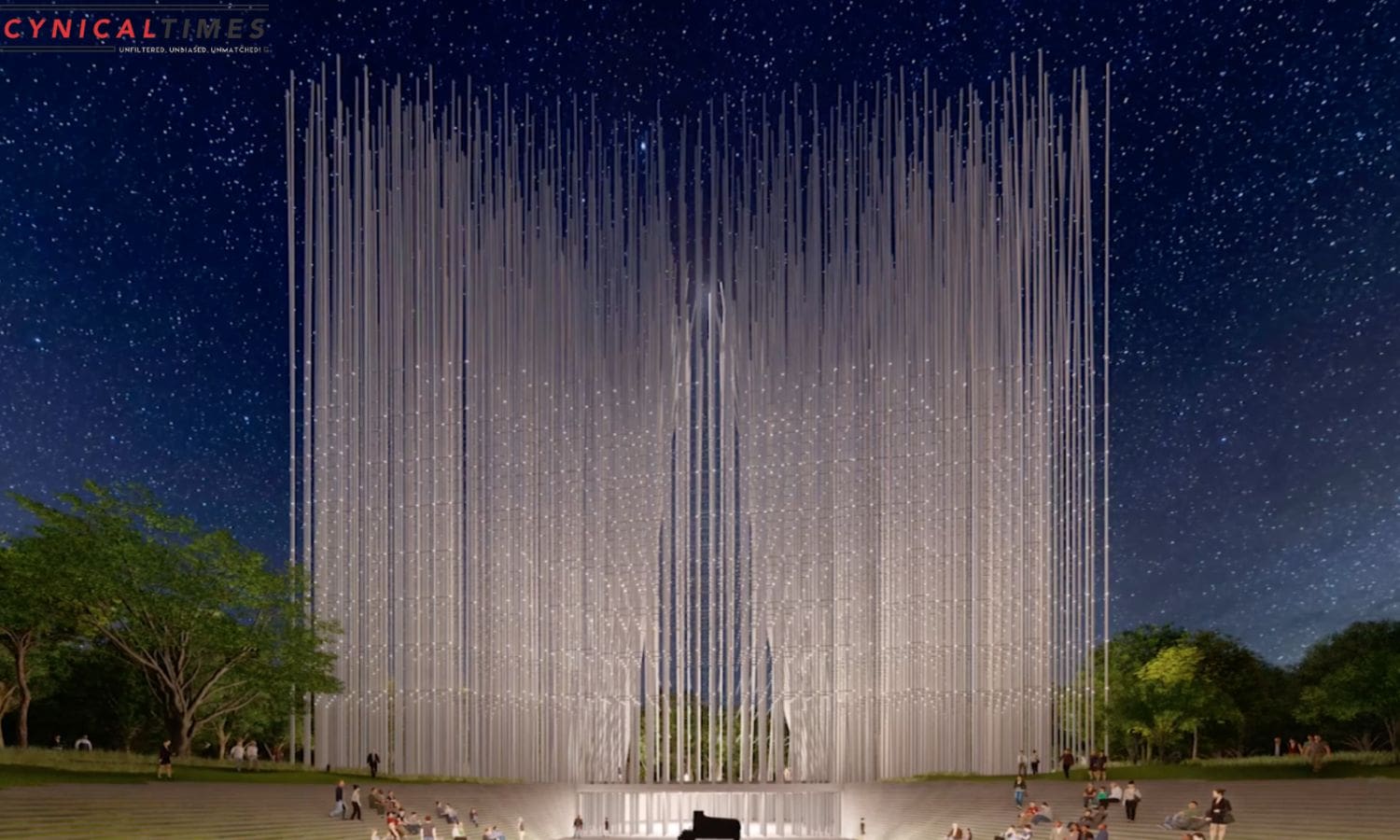Chavez Legacy Project : In Silicon Valley, a landmark project known as “The Breeze of Innovation” has faced a four-year journey filled with hurdles and disputes, and a new contention may prolong its realization.
Originally planned for Plaza de Cesar Chavez in Downtown, this innovative design features swaying rods powered by the wind, creating a mesmerizing nightly spectacle. The project had garnered the support of the San Jose City Council, positioning Plaza de Cesar Chavez as its potential home. However, an unexpected dispute has emerged regarding the management of the park and the future landmark.
The Chavez family, originally supporters of the project, is now reconsidering their involvement due to concerns surrounding the management of the Plaza and the proposed landmark. The Chavez Family Vision, an organization established in 1998 to uphold the legacy of Cesar Chavez, the famed labor leader, is at the center of this dispute.


Their concern revolves around the suggestion to employ a private conservancy to oversee the public park where the Breeze of Innovation would stand. The conservancy proposal comes from Urban Confluence, the driving force behind the landmark project honoring Chavez.
Gabriel Medina, whose grandmother was the older sister of Cesar Chavez, made his stance clear by sending a letter to Urban Confluence on October 11. He conveyed a significant ultimatum: without a more inclusive management plan, the Chavez family might withdraw their support. Medina articulated their primary objective, stating, “Our main goal is really to make sure that my great uncle Cesars legacy is celebrated in a way that recognizes all that he did for farmworkers and those in need.”
The Chavez Family Vision board shares a common apprehension that a private entity overseeing the project might inadvertently overshadow or neglect Cesar Chavez’s legacy. Medina emphasized, “We want the Urban Confluence and the city to stick to the original plan, not have a third party act as a middleman.”
The third party in question, known as The Plaza Conservancy, takes inspiration from organizations that have successfully revitalized renowned parks like Golden Gate Park and Central Park in New York City. The conservancy’s objective is to promote public usage of Plaza de Cesar Chavez, enhance the park’s visitor experience, maintain amenities, preserve historical significance, and create new community-centered experiences.


Also Read : San Jose Real Estate: New Owners for Modern Gem on Georgetta Drive
Plaza de Cesar Chavez, nestled in the heart of Downtown San Jose, is one of the city’s older parks, yet it has historically been underutilized. In a typical year, events are scheduled for only 55 days, which includes the popular Christmas in the Park during December.
The city envisions a revival of the Plaza by hosting the Breeze of Innovation project. Ideas proposed to the city council in April included expanding the park by potentially eliminating parking or a traffic lane on Market Street, which encircles the area. Additionally, plans include a new stage at the park’s southern end and other features to honor Cesar Chavez, the park’s namesake since 1993.
Despite the ongoing disputes, Urban Confluence’s Executive Director, Steve Borkenhagen, has remained unresponsive to multiple requests for comments.
Originally planned for Arena Green, at the confluence of Guadalupe River Park and Los Gatos Creek, the landmark was relocated due to environmental concerns. City leaders now see Plaza de Cesar Chavez as an ideal location that could draw more visitors to the heart of downtown.
Xavier Campos, the president of the Chavez Family Vision and a board member for Urban Confluence, underlines that the Chavez family is not opposed to having the Breeze of Innovation at the Plaza or against revitalization plans. Their primary concern is to ensure that the project’s oversight remains in the hands of the city, assuring accessibility to the public.
Our Reader’s Queries
What will Chávez be remembered for?
In 1962, Chávez, along with Dolores Huerta and Philip Vera Cruz, established the National Farm Workers Association, which is now recognized as the United Farm Workers of America (UFW). This organization marked the first-ever successful union for farm workers in the United States.
What’s the purpose of Chávez protest?
In a bid to garner support for the rights of farm workers, Chavez and his followers resorted to work stoppages and national boycotts of lettuce, table grapes, and wine. Born to Mexican immigrants in 1927, Chavez’s family relocated from Arizona to California in search of migrant laborer jobs. Through his activism, Chavez aimed to bring attention to the plight of farm workers and promote their protection.
What did Chávez advocate for?
In 1952, Chavez took on the challenge of fighting for the rights of food and farmworkers. He organized people to push for labor law reforms that would ensure basic human rights for these workers, including safe working conditions and fair wages. This was crucial for them to be able to provide for their families. Chavez’s determination and efforts were aimed at securing a better future for these workers.
What were the goals of Cesar Chavez movement?
Cesar Chávez, along with Dolores Huerta and other Chicano activists, fought for the rights of farmworkers using nonviolent organizing tactics based on Catholic social teaching, Chicano identity, and civil rights rhetoric. Their efforts were aimed at protecting the rights of workers in the agricultural industry. By employing uncommon strategies, they were able to make a significant impact on the lives of many people.

